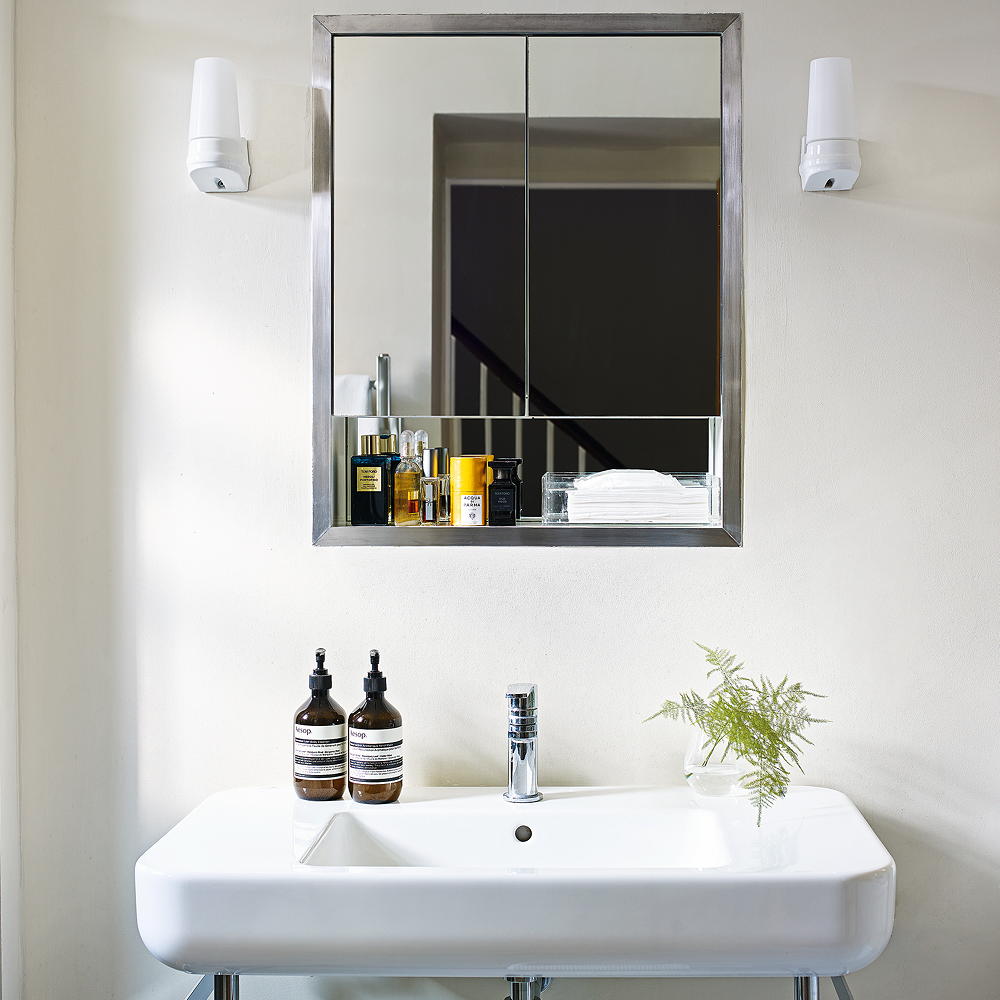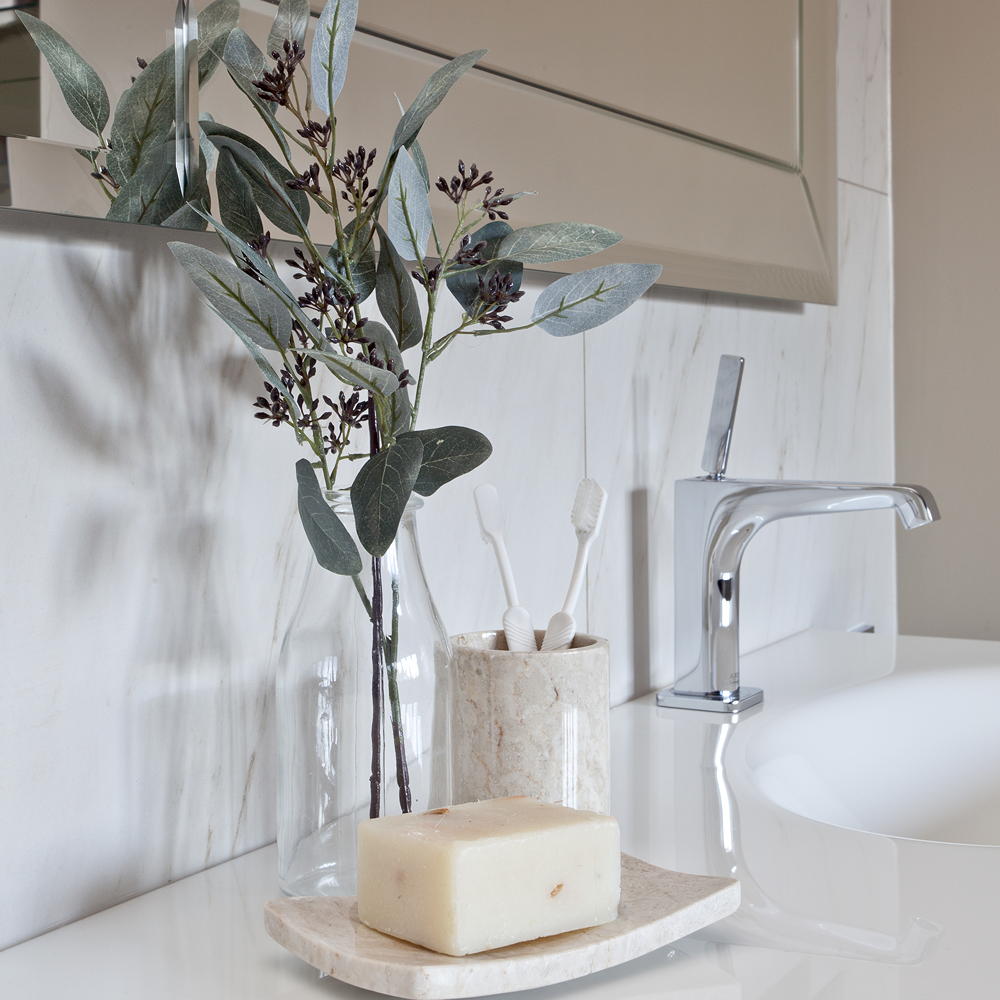How to make your own effective hand sanitiser according to a germ expert
All you need is three ingredients

The coronavirus outbreak has caused sales of hand sanitiser to skyrocket. In the last three months sales of antibacterial gel Purell have spiked by 1,400 per cent.
For more cleaning tips visit our care and cleaning channel
Photos of decimated hand sanitiser supplies on supermarket shelves have been popping up online. There have even been reports of several Boots stores limiting the number of hand sanitisers customers can sell. But rather than battling the crowds, hand sanitiser is surprisingly easy to make.
Hand sanitiser works by killing germs. However, because it doesn't actually wash the germs away, hot water and soap still remains the best defence against spreading bacteria and virus.
Scrubbing your hands for at least 20 seconds should rid your hands of any germs, dirt and debris. However, when you're on the go giving your hands a good scrub is not always possible.
How to make hand sanitiser

If you like to keep a small bottle of hand sanitiser in your handbag or next to the front door, skip the trip to Boots and instead make your own. All you need is four ingredients, plus a container:
What you'll need
- Rubbing alcohol (Isopropyl alcohol)
- Aloe vera gel
- Essential oil – we prefer a mix of lavender and tea tree
- A small bottle to contain your mixture – pump action works well
1. Fill your bottle two-thirds of the way full with alcohol.
At least 60 per cent of the solution needs to be alcohol according to germ expert, Professor Miryam Wahrman at William Paterson University.
'The bottom line is that alcohol is the active ingredient. If you drop below 60 per cent, the effectiveness drops dramatically,' she told Business Insider.
Dr David Agus, speaking to CBS News, agrees. 'Homemade hand sanitisers are just as effective as what you buy as long as you use the right percentage of alcohol.'
Isopropyl alcohol, known as rubbing alcohol, is best to use, according to CBS.
2. Add the essential oils
Add 10 to 15 drops of tea tree essential oil and lavender essential oil. Both oils have anti-bacterial properties as well as smelling amazing together. However, you can use any essential oil you like.
3. Top up with aloe vera gel
You should use approx one part aloe vera gel to three parts alcohol. The aloe vera will make the solution gentler on your skin but don't overdo it or you'll risk diluting the mixture. Some experts also advise you should leave the mixture for 72 hours to settle before you use it, to ensure any potential germs around when you made it are killed off!
4. Give it a mix
Shake the bottle – hard – and throw it into your handbag, ready for action. You may find that the mixture is slightly sticky but it will do the job.
Updated March 16: We do not link to ingredients in this article. Be aware that they are sold out or overpriced in some stores. We do not condone companies selling overpriced products and would advise you exercise caution and do not buy if you believe the price to be inflated.
Do exercise common sense when using your home-made sanitiser, however. For example, do not exposed hands to a naked flame and always do a patch test first to make sure your sanitiser doesn't cause skin irritation.

You can also use a similar method to make your own homemade multi-purpose disinfectant for around the house.
Related: Three lemon cleaning hacks that are toxin free and total genius!
Simply mix half a cup of vodka with half a cup of white vinegar, diluted with water together in a spray bottle. Then finish by adding 10 to 15 drops of lavender and tea tree essential oil.
Get the Ideal Home Newsletter
Sign up to our newsletter for style and decor inspiration, house makeovers, project advice and more.

Rebecca Knight has been the Deputy Editor on the Ideal Home Website since 2022. She graduated with a Masters degree in magazine journalism from City, University of London in 2018, before starting her journalism career as a staff writer on women's weekly magazines. She fell into the world of homes and interiors after joining the Ideal Home website team in 2019 as a Digital Writer. In 2020 she moved into position of Homes News Editor working across Homes & Gardens, LivingEtc, Real Homes, Gardeningetc and Ideal Home covering everything from the latest viral cleaning hack to the next big interior trend.
-
 My go-to Ninja coffee machine is on sale for Easter weekend
My go-to Ninja coffee machine is on sale for Easter weekendIt makes coffee shop quality achievable at home
By Molly Cleary
-
 When to plant out annual flowering plants for vibrant, colourful garden borders – and give them the best start, according to experts
When to plant out annual flowering plants for vibrant, colourful garden borders – and give them the best start, according to expertsNot sure when to plant out annual flowering plants? We've got you covered...
By Kayleigh Dray
-
 I'm a kitchen decor editor and didn't like this tableware trend - until I saw H&M Home's designer-look plates
I'm a kitchen decor editor and didn't like this tableware trend - until I saw H&M Home's designer-look platesThey made it easy to justify a new crockery set
By Holly Cockburn